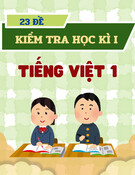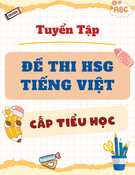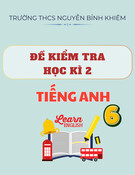
.TR[],ONG DHSP HA NQI
T'RU'ONG THPT CHUYEN
DE THI THU DAT HOC I,AN 2
nnon sntn uqc
Thd'i gian liun biri: 90 Phtit;
NguJ, 26/2/2011
ermffingffangtlr6ichn'birrgI*9'.-:^""|::f?lJ".1:?l::j:-ltaialen,Mvdrn.TAns6cira
aren r.ri trong quan thc r ra 0,2 vir 0,4 trong qrln tnc z. i6u c6 100 c6 th€ 6ch 6'ni5i q'an th6, sy kh6c'rrau vA s6 ruo-ng
6ch d! ho-p ttr giff'a hai quAn th6 la bao nliiOu? D.l6
A.12 B.8 c'32
CAu 2.o so dii ph6 h0 du6.i diy, hinh vu6ng bi€' hiQn lir nam vd hinh trdn bi6u hien ld'fr" Hinh vu6ng vi hi'h trdn mirur
den bi6r-r hiqn c6 th. bi enh hu6.ng cira be'h ;;;;fi. *a' ii t*ta" ndo sau dav gi6i thich trit nhat vc bsnh di truv€n th€
hi€n o so'd6 PhA hg sau?
A.BQnh do gen lan tr6' nhi6m sic th6 thudng qui tlinh B'BQnlr do gen trqi li6n k6t tr€n X qui dinh
C.B6nh do gen lin li€n k6t tren X qui dlnh D'Bqnh do gen trQi tr6n nhi6m sac th6 thubng qui dinh
cau 3.cho c6y cd chua tam nhiarn c6 miu xanh mang gen troi A (AAA) thp bing rr4t prrin cira cdy m?ru vang lu5''g bQi
(aa) d0 du.o. c Ft.Cho ri ;* *r'fr.i" C t a prr6n n mo'i co st'c sdng) thi r! lQ phAn lv ki€u hinh d F2 li bao nhi.u?
A.3:l 8.35:1 C'17:l D'18:l
CAu 4.Trong khi nghi€n cilr-r chim s6 Darwin tr6n c6c dio GalapagT : lu".q'""" :6:tl:I.{ hai loii chim sB dAt thdnh c6ng
rro'g vi6c s6ng cirng nhau tr6rr rnQt dao. Mot roii c6 m6 l6'n, cdn rodi kia c6 mo nh6. Ei€' 'io sau tlay giai thich tdt nhat
cho su chung s6ng cia ch0ng?
A.MOI lodi ld nh4p cu vi chi s6ng mQt nira ndrn tr6n dAo
B.Clitng khai th6c ngudn thirc dn kh6c nhau
C.Chirng co th6 giao ph6i, t4o n€u con lai v6'i m6 c6'trung binh
D.Hai todi clri m6'i gdp nhau th6ng qua nhfp ctL tir c6c hdn tlAo khSc
cau 5. Nlrd sinh hgc phan til'ding enzim restrictaza cho c6ng viQc ndo sau day?
A.d€ cat 'Qr do4' ADN cu tlr€ ti' b0 gen d6 t4o thdnh ADN tei td ho-p B'd€ gAn rn6t doqn ADN cU thl5 vdo plasmid
;.;;;| i;"nh6,r',ai." 'r".g g"niuit6 hqp n'46 tach ADN 'rsch kdp thdnh ADN rn4ch don'
CAu 6.MZ b0 ba ndo sau dAy kh6ng md h6a axit atnin:
A.AUG B.UGA C.UGG D.AUA
li"l.*4, qui vd ki6r-r lrinh c'a ph6p lai: DDd x DDd td: (c6c gi6o ti' t4o ra ddu c6 sri'c s6ng)
A.3hoado:lhoatling B.9hoad6:Thoatrbng. C. 15hoad6:lhoatrlng O ?:lt:"9"'lhoatrdng'
c6u 8.SLr. xLr6t hiQrr rnQt do4n moi v6.i aa, . .. . ...ra "ai., tt ict d6 .......t6ng no.'p nbN vi n6 kh6ng c6 khi ndng bit daLr n6t
chur6i polynucletit.
A.5'-photphattp do.........ADN polymeraza 8.3'-OH tp'do'. .ADN polyrneraza
C.3'-OH tu do.. .ARN potymeraza D'5'-photphat tu do" ' ' "ARN polymeraza
cau g.T4o ADN tei t6 ho..p li€n qr_ra't6,i vi€c cit gen tir.mQt phan tir ADN cho, 96' vdo ph6n tir ADN vdng cira vi
'druan,
v.r sau d6 chuy6n ADN tei t6 ho..p veb roai rnac. Jieu ndo s4u d6y rnO ta cau tri.rc dgrrg vdng cfia vi khuan?
A.restriction erlzytl'le B.plasmit c'phago' D'vector
ciu l0.Su kh6ng ph6n ly cira I c4p nhi6m sic th6 trong khi phdn bao Il s6 tao ra loai giao tir nio sau d6y?
A.Hai giao ttr lA iu6'ng bQi, mQt giao til lA n+l' vd mQt giao til li n-l
B.Hai giao tir lA n+l' lrai giao tu ld n-l
C.Hai liao ttr lu6ng bQi vd hai giao tir clon bQi
D.Hai giao tir do-n bQi, mQt giao til ld n+1, vd mQt giao ttl lA n-l

Cffu I l.Vai trd ctia ldp doarr nhiSm sic thti?
A.Bin sao thil hai cira gen sE bi6Lr hi6n du6'i nr6t co ch6 cli,3u hoa rn6'i)t6ng bi€n di di trLryAn
B'BAn sao thil hai cira gen c6 thd tich ltiy c6c d6t bi6n)tang bi6n di ditrLryAn, di€u nay sE g6y ch6t 'eu chico mot ba,
sao duy nlr6t cria gen
C.lap doan girip tao lodi m6.i
D.Cd A vd B
cAu l2.vi sao nhimg cd th6 rnang dao doan thudng giim khd n6ng sinh sin?
A.Nhi6m sic thii bi dio iloan khdng th6 ti€p ho.p duo-c vdi nhi6m sic thiS binh thuo'ng trong giim ph6n
B.Trao AOi cheo khdng th€ xAy ra gifr'a nhi6m sic th6 thud'ng vi nhi6m sic th6 bi dAJdoan
C'Trao aoi chdo giira nhi6rn sic th6 bi dno dogn vi nhiErn sic thc binh thud'ng d6n t6i hinh thdnli nhi6m sic th,i thi6u hodc
thira gen
D.Eio doan thu'd'ng 6nh hu6'ng d6n chric nd.ng cira gen vi gAy v6 sinh
Cf,u l3.Nhsng di6m chung gifi'a tl6t bi6n m6t doan, d6o do4n vd chuyi5n doan nhiErn sac thii?
A.Ch[ng tl6u ldm rn6t vat ch6t di truydn
B.Chring d€u gi0p hinlr thdnh lodi m6'i
C.Ch0ng ddu lim th6m v6t ch6t di truydn
D.chring d€u h ki5t qui cria vi6c ADN bi b6 gey vd sai s6t trong qu6 trinh sri.a chfr,a
Ciu l4.E6t biiin cAu trfic nhi6m sic thi3 ndo thuo'ng duo. c dirng cld x6c ttinh vi tri cia gen tr6n nhi6rn sic thc:
A.M6t doan B.L6p clo4n C.Edo doan n.Cnuyen aoa,i
cflu l5.cd th6 nio sau day thfch nghi th6t (theo qLran di6rn ti6n h6a):
A.M9t chim s6 rndi giao phOi vO'i nhidu con tr6ng B,MOr chim s6 rn6i 116 nhiAu trti.ng
C.M0t chim s€ rndi 6p nd thdnh c6ng nhiAu con non D.MOI chim s6 m6i s6ng l6u hon bilh thud,ng
cffu l6'Bgnh bach tang.d nguo'i bi gdy ra b6{ m6t locut don, vd la gen ldn. B4n quan s6t mQt quA'n th6 ngu.d.i co g2%
ngrroi ld b4ch t4ng vd phAn cdn lai ld binh thuo'ng. TAn s6 alen trdi ld bao nhi6u?i quAn th6 c6n bing) ---- "o-'
4.0.094 8.0.088 c.0.170 D.0.180
CAU l7.Li€u ph6p gen ld
A' rnQt phrLo'ng phrip di€Lr tri c6c bQnh di truydn 6' mfrc phan ti'vd t6 beo bing c6ch tlray th6 <<gen bgnh >> ( gen d6t
bi6n) bing gen ldnh ( gen binh thuong )
B' rnQt phuo'ng phdp di6u tri c6c bQnh di truyAn 6'mri'c phan ru'vd tr5 bdo bing c6ch lo4i b6 << gen bQnh >> (gen d6t bi€n)
c' rn6t phuong ph6p di€u tri c6c b€nh di truyAn 6'mri'c phdn tri' bing c6ch thay th6 << gen bQnh >> (gen d6t bi6n) clL'q.c
thay bing gen ldnh ( gen binh thud'ng )
D'mQt phu'o'ng ph6p di6u f ic6c benh di truydn d rnfrc ph6n tir bing c6ch srj'a chira << gen bQnh >> (gen d6t biiin)thdnS
gen ldnh ( gen binh thu.ong )
Cdu l8'C6 bao nhi€u toaittr6 ba kh6c nhau duo-c tim th6y 6'rn6t thuc vAt c6 bO nhi6m sic th6 lrrong b6i ld l6
A.8 B.t6 c.24 D.32
Ciu l9'MQt loditfl b6i( 4n:40) duo'c lai nguo-c trd laiv6'i m6t lodi (2n:20)ae ticm tra d6 c6 phni ld lodi b6 m9 crira todi
d6 hay kh6ng' Khi F.l dang thuc. hiQn giam phiin, ngu'd'i ta quan s6t hinh thai nhiSnr sic th.3 6.ki gifra gia* prri*i. N6u lodi
(2rr20) tl6 kh6ng phii td lodi b6 me trri hinh th6i nhi6m sic th6 s6 ld:
A.20 cip nhi6rn sic the kdp
8.20 cdp nhi6m sic thC kep vd l0 nhi6m sac th6 k6p kh6ng c6 cdp
C.30 nhiErn sic thd kdp kh6ng c6 c4p
D. I 0 c4p nhi6m s*c th€ k6p vi I 0 nhiErn sic th6 kdp kh6ng c6 c4p
ciu 20'Mat quAn thti l6'n dQng v4t phong thi nghiQm duoc cho phep giao ph6i ngAu nhi€n trong vai th6 h€. sau m6t vdi
tlriS ne ,25Yo s6 ci thi5 mang tinh tr4ng lin(aa), fiong voi ir,6 rre *udipilat. pr'a" "i" iui'*un* tinrr tr4ng tr6i, v6y s6 c6 th6
mang gen di ho.'p (Aa) ld bao nhi€u?
A.0.05 B. 0.25 c. 0.50 D. 0.7s
ciu 2l . B€nh clao li b€nh ptro uitin nh6t trong c6c b€nh da gap 6. ngud.i vi NST 2l
A' nhd vd chri'a it gen ho'n crlc NST kh6c , ki6Lr gen thla I NST 2l ld it nghi6m trong n6n cdn s6ng duoc
B. c6 kich thu6c 16rr hon c6c NST khrlc n6n inlr hu.crng l6.n gay hQi chirng rtao
c. c6 chira nhiAu gen hu-n cfc NST khdc n€n 6nh hudng l6n g6y h6i h0i chrl.ng dao
-2-

D. c6 l<ich thu6.c 16rr vA chira nhi€Lr gen hon c6c NST kh6c n6n Anh htto'ug l6n gay lroi chirrrg clao
Cf;u 22.Menden ph6t hi6n ra qtri lu4t di truydn boi vi:
A.QLran s6t tt6ng thd.i m6t lirc nhiau tinh tr,ang o- b6 mg vd cou c5i cira chfurg
B.Tin ring c6c tinlr tr4ng di truyAn tir b6 vi mP s€ hda tr6n viro nhau il con c6i
C.Chi quan t6m t6'i ,u aitruyen cira mQt vii tinh trgng dang ngtri6n ciru , vd b6 qua c6c tinh tr4ng kh6c
D.Chi rrghi€n cfiu c6c con c6i thu duo. c til mQt ph6p lai duy nh6t
Ciu 23.CAu nio sau d6y vO hQichrilg Dao li sai:
A.Ti lC sinh con Dao sE tdng d mq tr6n 40 tu6i
'.4; ;i;;y ,u uoi su kh6; ph6n ly cria nhi6rn sic th6 trong giim phdn
c.Thd.i gian k6o dai gi[.a giarn phdn ki I vd ti ri ra nguy€n nt'a-n la*tang s6 ca sinh con Dao 6'plrg nfr' 16rr tu6i
D.TAt c6 dAu ttring
CAu 24.DU do6n qui lu4t di truyAn cho trud'ng ho. p sau: , ..
M6t nguoi din 6ng co tai mdu tim t6.i tu uan irung tdm tu vAn di truyAn. B6c si d6 vE so" dd pha lrQ dita theo c6c th6ng tin
sau:
O giu Oinfl niry, M9 cria nguo'i ddn 6ng vd mQt ngudi ch! 9OnS.!itai.miu tim, nhung b6 cira atth ta, anh trai, vd hai chi gdi
kh6c thi c6 tai binh thndrg. Ngub.i ddn ong ua ."uoi uq ro tuiuinh thud'ng vd sinh 7 d,i'u "on, bao g6m 4 con trai vh 3 con
g6i. Hai con g6i va hao "o'n tru'i ld tai tim.kh6 n6ng nhi€u nh6t cho tinh tr4ng tai tim ld: ( tinlr tr?ng niy do gen tr6n mQt
locut qui dinh)
;.D";;" tr6i tr€n nhi6m sic th6 thudng qui ttinh B.Do gen l{n tron nhi6m sic th6 thrrdng qui dlnh
C.Oo ["', trqi tren nhiSm sic th€ gi6'i tiih'qui itlnh P'KL6"ng x6c ctlnh duo. c dsa vio nhirng dit kign tr6n J
Ciu 25. Bgnh so h6a co nung ie b6nh do gen lin hdn nhi6m sic tho thub'ng qui dinh, ve tY lQ ngud'i mdc b€nh ld
tngud.i/2500.gud.i. MQt ngud.i anh kh6ng ui'uenh nhung c6 em g6i mic bQnh"t6i phdng tu vdn di truyAn. Gia sir ring
qLrin th6 d6 lA can bing Hacdi-Vanbec. Di€u nio sau ddy li dftng?
A. Kha ndng ngud'i anh mang gen bQnh ld l/2
B.N3;,;;; uin .o con v6'iln"0t ngudi phq n['kh6e manh thi khA ndng con cia anh ta bi b€nlr li 1/150
a.N1i; niud.i anh c6 cor1 v6'i em lrq cna minh thi khi ning con c0a anh ta bi bqnh ld 1/12
;.N6; ni,ro'i "* g6i bi bdnh c6 con v6'i anlr ho cira cd ta thi khA ndng dira trd bi b€nh ld.1/a
CA,u26.citcnhd nghi6n cfiu d6 tim thay c6c h6a th?ch cria lodi ngpi Eocene 6'Colorado. Lodi 6'cang sdu trong ldng d6t
thi c6 kich thu6.c ciurg nho. Di€u niy dd ddn t6'i k6t lutn gi trong c6c hQc thuy6t tii5n h6a?
A.E6 le bang chirng Jnrrng minh c6c lodi tiiSn h6a qua thoi gian B.N6 chi ra ri,.rg tht ch chc lodi c6 moi ticn hQ v6'i nhau
C.*u "t,,tnu"nrinh Jng *ii ,.uor.,g thay rl6i theo thd'i gian D.N6 chri'ng minh ring c6c lodi kh6ng thay d6i theo thoi gian
Cdu2T.Cdu ndo sau dAy sai khi n6i cl6n ho6n vi gen :
A. TAn s6 ho6n vi ge' phr,r thuQc vdo kho6rrg c6ch gifr'a c6c gen trdn NST
B. Ho6' vi ge' xdy ,u lni "o ,u tiep no.'p ui truo Joi chdo liira hai cr6matit chi em tro'g cdp NST k6p tuong d6ng o ki
dAr.r cira giArn phAn lAn I
C. O ru6i giAm, ho6n vi gen chi xiry ra 6'ru6i c6i
D. C6c gen ciug gAn nhau lrodn vi gen chng kh6 xiy ra
Ciu 28.
. i . --l
I ffi ;.++_.. : ,
t:
I i : ''
',, .-' r-Hl'
I
I
'l''
O so- d6 p56 li€ tr€n, 11 vn II2 bi b€irh nhugc co, do gen l4n tron X qui dinh. III2 bi b4ch t4ng do gen l6n tr€n nhiErn sic th6
ttrudiig qui clinh (v6.i r! lQ ngud'i m6c benlr h li 10000). Khi ndng bi bEnh 6'ngudi IVI vd IV2 la kh6ng 16'
Klrd nlrrg ngub'i IV I mang gen bQnh (kh6ng bi b€nh), ld:
A.114 B.tlz c'213 D'99/100
Cdu 29.Gen H vd I anh hg6.ng t6i su bitiu hi€n ki6u hinh nh6m rn6r-r ABo theo c6ch sau: Ki6Lr HH,AB hoflc Hh,AB qui
dinh nh6m rnSLr AB trong khi ki6u gen hh,AB qui dinh nh6m m6u O' DAy ld vi du cria:
A.troi hoin todn g.AOng tr6i C.trQi kh6ng hoin todn D.tuong t5c 6t ch€

A.Quan s6t lii6u hinli hirih thdnh do trao d6i-ch6o k6p li6n qr'rarr t6'i alen tr6i vd alert l[n cira gen A'B'C
B. Quan s6t ki€u hinh hinh thdnh do trao <16i ch6o do'n li€n quan t6'i alen tr'6i vd alen l[n cia gen A'B'c
C.Quan sdt ki6u hinh ctra b6,m9 .. , i. 1 -.".^ .-
O.iu" i.n6,t* thd x6c dinlr vi tr( cfra gen bing quan s1t k*:'ii:0,".'lnt ph6p lai
cAu 39.Ge, A vi B *u',riruu t.,o.n g",i R vi c, vi ca 3 gen rd ri6n k€t v6'i nhau. Diau ndo sau diy l<h6ng th€ k.t lu4n?
A.B nirn giira A vi C B'C ndm gifr'a A vd B
C.A nim gifr'a B vi C D.Trao d& ch6o d6 xAy ra giita A vd B ho"n giii'a A vA C
Cf;u 40. Vi sao Menden khdng thAy hiQn tuo'ng li6n k€t ge1 trong cic ph6p lai cfia minh?
,,, narr LhAno "A r.,^ it^'
A.M6r s6 gen (trong ph6p rai mh menden da rim) la ticn'ki5t, nh*ngch'ng nim qu6 gd' nhau n6' kh6ng c6 trao d6i cheo
B.TAI ci ? gen mi Ong ngniJn criu tliju nim d 7 c[p nhi6m sbcth6 kh6c nhau aA +rcnrlAi c-h6o xiv r
c.Mot si5 gen(mi 6ng nghi€n c'.u) ld li.n k6t, nhung chirng nim qu6 xa nhau vi v4y lu6n c6 trao aoi cneo xiy ra lam k6t
qui ph6p lai gi6ng vdi phin ly dQc lf,p r ^ . ,_:a.^ r.'^-- ria- vA+ nonhi hA nrr
D.ong ktrong thuc hign phdpiai rnQt c6ch ki lu6.ng, vi vay hien tuo. ng li€n k6t gen b! bo qua
10 cAu hoi cho chuong trinh co b6n
CAu 41. Doan Okazaki la"'"'"''
A.mQt do3n cfia enzim ADN polymeraza
; il";i* *aiio* t* radigifip enzim ADN polymeraza c6 thiS thuc hiQn chri'c ndng
C.c6c do4n ADN ngln duo. c t4o thirnh theo chiAu 5]-3'dga tr6n mQt trong hai m4ch do'n ADN
;';;"-;;nnN "ga" bi cet b6 khi mARN so'khai cliuv€n thdnh mARN tru6'ng thinh
Can 42.D6t bi6rr gen ti6n ung thu vd gen irc chri khoi u li nhfr'ng dang dOt bii5n gen ndo ?
A. d.t bi6n gen tiAn ung tlru thud'ng le d't b;c; ;Oi , uOt bicn gen tit J6 kh6i u thub'ng ld d.t bi€n l6n
B.d't bi€n gen tidn ung thu thuong ra aot ui6n troi, oot uien gJn ,i'. crre rnoi u cfrng thud'ng ld dot bi€n troi
c.dQt bi6n gen tiAn ung thu thudng le d6t bi;; ia", oO, bi6n ge' ri'c chiS kh6i u cfrng thudng ld dqt bi6n lan
D.dot bi€n gen tian ung thu thudng la dot b;; ii*, iot bia,',"gen ri'c ch. khdi u thuong ld dot bicn troi
Cdu 43.BQnh ph€ninkii niQu do nguy€n nhdn chir yi5u nio giy ra , : .r-r-,- +:-A
A.do dOt bi,5n gen md ho6 enzim xfc t6c s9'chuyen ho6 axit amin pheninalanin thdnh tiroxin
B.do d6t biiln gen m5 h6a enzim xirc t6c sg chuy6n ho6 tir6xin thdnh axit amin ph€ninalamin
i.i" U* bi€n len md h6a enzim girip t6ng ho"p axit amin ph6ninalanin
n lo aOt UiCn gen rni h6a enzin.r giirp h6p thu axit amin ph6ninalanin . '.
cau 44.prrin niro trong cau trirc ADN nhi6u kh6 ndng la dich cira chgn rgc tu nhi6n ch6ng lai c6c dot bien thay th6 kh6ng
d6ng nghla? ,,^.-- ^a+-^^ ^,,; A ' '
A.MOt intron trong mQt gen qui clinh protein cau trirc B.MOt intron trong mQt gen qui dinh protein kh6ng th€
C.MOt exon trong rnQt ge' qui ctinh protein cAu trirc D'Kh6ng mQt doqn ADN ndo ld dich cita chgn lgc tp 'hi€n
c'u 45.Enzym alcohor dehydroge'eza 6. lodi trruc vat Phlox drumntondii dttgc xic dlrrlr bing mQt locrtt da ale'' I(hi
nghiOn citu 35 c6 th6 , ta thu duo-c sO ligu sa'-t:
Ki€u gen '. aa ab bb bc cc ac
Sdluo-ng:2 512 l05l
TAn s6 cita alen a,b,c ld:
A. a=0,34,b:0,56;c=0,1 B' a=0'24;b:0'56;c:0'2
C. a:0,14;b=0,46;c=0,4 D'a=0'14;b=0'56;c:0'3
ciu 46.V6.i mQt locut c6 2 alen., B vi b, vi v6i ki€u.gen bb.se gdy ch6t.vir ki€u gen BB vi Bb ld c6 gi6 trithich nghi
ngarlg nhau, Dg do6n tin st| ale' cfia b sau f O tn6 f'g n6'itAn s6 cna b tAi th6 hQ xuit ph6t(th6 he 0) la 0'l?
A.0.1 8'0.05 c'0,0 D'0'5
Ciu 47.M0t qudn th6 trang can uing H*ai-vunb". aoi voi locut gen c6 4 ale'>tan s6 cfia 4 ale'd6 ld: al(0'1)'
a2(0,2),a3(03),vi a4(0'3)'TAn s6 alen a2a3ld bao nhi6u?
A.0.2 8.0.08 c'0,16 D'0'4
Cfru 48.Hai enzim cin thitit trong vi€c tao ADN t6i t6 ho..p?
A.endonuclease, transcriptase B'DNA polymerase' topoisolnerase
C. restriction enzyme, ligase D'polymerase' ligase

Ciu 30.Voi hai gen 1an ( a vd b) o ngLroi. Cho sd liQu sau c1iy, x6c clinh khodng cdch giti'a ltai gen (theo cion vi bAn'
aO) : aag U=206;Aabb:704 ;aaBb:l 3 6;aabb=25 4 -
A.12,7 B.1 c.24.2 D.28
CAu 3 1.C6c bQnh plr6t sinh tir dQt bi6n gen ty thti li do:
A.auh huo'ng t6i sq't6ng ho. p protein
C.cA A vd B
CAu 32.DiAu udo sau ddy tlirng vd alen ldn?
A.Anh hu6.ng cria gen l[n ludn ld c6 hai ho4c kh6ng t6t bing gen trQi tuong r1ng
B.Chring chi biOu hign khi chring xr.rAt hiQn cirng alen trQi
C.Alen l[rr tAo ra protein kh6ng chirc nlng ho4c kh6ng t4o ra protein
D.Anh huong cria chring lu6n bi che l6p
CAu 33.O mQt sinh v{t lu6lg bQi, ta hdy xem xet mQt locut c6 4 alen D1,D2'D3 vA Dq' Bao nhi€u
locut ndy? Bao nhi6r-r kiiiu gen trong s6 d6 le di ho-p tri'?
\
(Chat A sin sinh ra ch6t B nho enzim e1 , chAt B sin sinh rachltC nhb'enzim e2)
Dua vdo so'dd tr6n hdy tri lo'i cAu hoi sau:
Clro lai giiia hai ki6u gen: gtgtG2G2 x GlGlg2g2, dir do6n r! lQ c6 th6 mang ki6u hinh (c6 ho. p chAt B vd kh6ng c6 ho. p
cnAt C; 6- Fz? vd ph6p lai niy tuAn theo qui luflt di truy6n ndo?
A.l2 ki6u gen vA 4 di ha'p tir
C. l6 ki6u gen vri 8 di ho.P tiL
CAU 34.
A.1 I l6; tno'ng t6c 6t ch' 9:3:4
C.3/8;tuong t6c b6 tro. i 9:6:1
Cffu 35.
-il
g .l:
A.9lt6 8.3/16
B.thu nhin ning luo-ng
D.khdng phdi A vi B
B. 8 ki€u gen vd 4 di ho. P tfr'
D. 10 ki€u gen vir 6 d!ho.'p tfi'
B.3/16;tuo'ng tAc b6 trg 9:3:4
D.1/4;tuong t6c 6t ch() 12:3:1
D.l/16
ki€u gen c6 thd c6 cho
(Enzim er bibAt ho4t khi gin v6'i ho.p chAt P)
Khi cho lai bi5-m9 c6 ki6u gen G3g3G4g4 thi tj' lQ tuong AOi s6 ca th6 F' c6 hqp chAt N ld:
c.3/8
CAu 36.Trong phdp lai vti mQt tinh tr4ng duo. c di truydn theo tuong t6c cQng g6p,chi co 21125 c6 th6 6' F2 c6 ki6u hinlr
hoirn todn gi6ng mQt b6n b6 ho{c mg crla P(mang todn alen trQi hoic toin alen l[n), c6 bao nhi€u cflp gen qui cllnh tinlr
trgng ndy?
A.2 8.3 C.4
CAu 37.PlrAn l6'n c6c con tndo calico(rndo tam
tarn th6 duc li:
A.XBXb B.XBY c.xbYY D.XBXbY
Ciu 3g.N6u ban c6 3 gen cirng li€n k6t tren cilng mQt nhiErn sic th6, bing cich ndo b4n c6 thd xdc dinh vitri cira cde getr
cl6?
D.5
tfre) ta mio c6i. Tuy nhi€n, mQt s(i it rndo ndy ld dgc. KiiSu gen cita mdo
t!l
I
I
(:
1
t;












![Đề thi Tiếng Anh có đáp án [kèm lời giải chi tiết]](https://cdn.tailieu.vn/images/document/thumbnail/2025/20250810/duykpmg/135x160/64731754886819.jpg)




![Đề thi học kì 2 Vật lý lớp 11: Đề minh họa [Mới nhất]](https://cdn.tailieu.vn/images/document/thumbnail/2025/20250709/linhnhil/135x160/711752026408.jpg)








